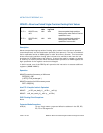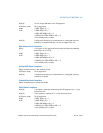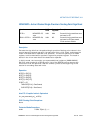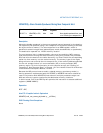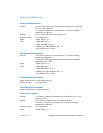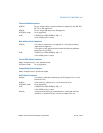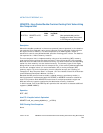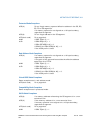
Vol. 2A 3-649
INSTRUCTION SET REFERENCE, A-M
MOVNTDQ—Store Double Quadword Using Non-Temporal Hint
MOVNTDQ—Store Double Quadword Using Non-Temporal Hint
Description
Moves the double quadword in the source operand (second operand) to the destina-
tion operand (first operand) using a non-temporal hint to prevent caching of the data
during the write to memory. The source operand is an XMM register, which is
assumed to contain integer data (packed bytes, words, doublewords, or quadwords).
The destination operand is a 128-bit memory location.
The non-temporal hint is implemented by using a write combining (WC) memory
type protocol when writing the data to memory. Using this protocol, the processor
does not write the data into the cache hierarchy, nor does it fetch the corresponding
cache line from memory into the cache hierarchy. The memory type of the region
being written to can override the non-temporal hint, if the memory address specified
for the non-temporal store is in an uncacheable (UC) or write protected (WP)
memory region. For more information on non-temporal stores, see “Caching of
Temporal vs. Non-Temporal Data” in Chapter 10 in the Intel® 64 and IA-32 Architec-
tures Software Developer’s Manual, Volume 1.
Because the WC protocol uses a weakly-ordered memory consistency model, a
fencing operation implemented with the SFENCE or MFENCE instruction should be
used in conjunction with MOVNTDQ instructions if multiple processors might use
different memory types to read/write the destination memory locations.
In 64-bit mode, use of the REX.R prefix permits this instruction to access additional
registers (XMM8-XMM15).
Operation
DEST ← SRC;
Intel C/C++ Compiler Intrinsic Equivalent
MOVNTDQ void _mm_stream_pd( double* p, __m128d a)
SIMD Floating-Point Exceptions
None.
Opcode Instruction 64-Bit
Mode
Compat/
Leg Mode
Description
66 0F E7 /r MOVNTDQ m128,
xmm
Valid Valid Move double quadword from xmm
to m128 using non-temporal hint.




